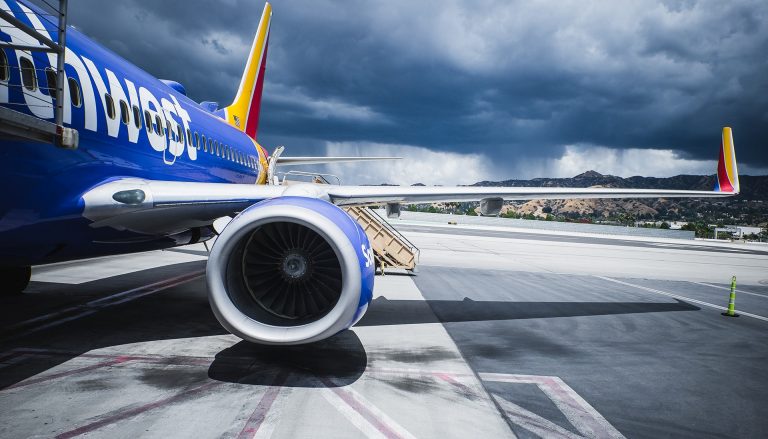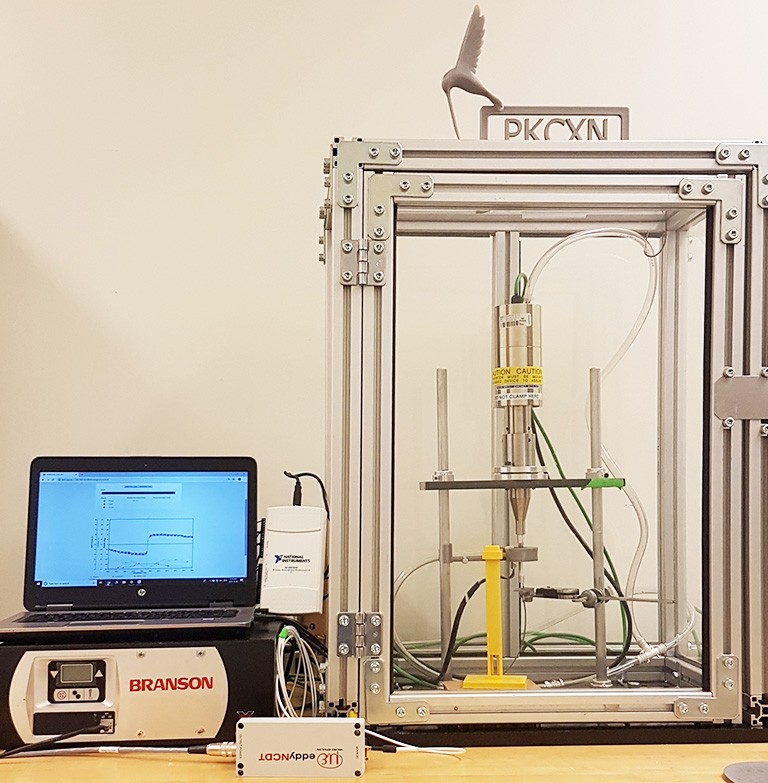Concordia undergrads build their own ultrasonic fatigue testing machine

When Ayhan Ince, associate professor of mechanical, industrial and aerospace engineering, realized his department could use a specialized but costly piece of equipment, he had an idea.
Instead of paying the exorbitant price and importing it from Japan, why not see if a team of his brightest undergraduate students could build one themselves?
And this is precisely what Paul Ilie, Xavier Lesperance, Keven Chan, Cristian David and Nicolas Dickey pulled off as part of their final-year capstone project.
The preliminary version of the lab-built ultrasonic fatigue testing system for the capstone project was only the first step of a more ambitious undertaking.
Last summer, Paul Ilie and Xavier Lesperance took it a step further by finalizing and testing the ultrasonic fatigue test system. The final version of the test machine measures the strength and durability of the metal alloys used in aerospace and automotive design at a fraction of the cost of conventional industry models.
The work that Paul and Xavier did on the finalized design of the system has since been accepted for publication in peer-reviewed journals Material Design & Processing Communications and SAE Technical Paper — quite a feat for two undergrad students.
Every time we faced a problem, we'd end up finding a solution
Can you describe the fatigue testing system?
Xavier Lesperance: The objective is to make a material go through billions of test cycles in an extremely short period of time.
So, to put it very crudely, the machine breaks things really quickly.
With airplanes or cars, you want to know as much as you can about the material you're using, so that it's as safe as possible.

Is this a vast improvement over other systems that are currently available?
Xavier Lesperance: There are other machines that already exist, commercial machines, but they're really, really expensive. And we managed to build one for significantly less.
How did all of this come about?
Ayhan Ince: I met Paul, Xavier, Keven and Cristian during a course project of MECH 390 -Mechanical Engineering Design Project to make an amphibious Honda CRV. I noticed they did very well, asked interesting questions and worked as a team. I was very impressed.
I needed an ultrasonic fatigue testing machine as part of my research, so I thought this could be a very good capstone project for the four students, and Nikolas who joined the team later.
This was not a piece of cake for them. In Canada, only the National Research Council has built a similar machine with government funds. This was a very challenging project.
How much of this was outside your regular coursework requirements?
Paul Ilie: We don't have any dedicated classes on fatigue and very limited exposure to ultrasonic principles and the techniques behind all that. A lot of this came from just our own passion and drive.
But the trust from Professor Ince was there from the beginning. We were fourth-year students in engineering and we were presented with a huge budget, by our standards.
Moving forward, how will the fatigue testing system be used at Concordia?
Ayhan Ince: The machine will mainly be used in the lab for research purposes. However, I plan to use it for course projects at the graduate level, specifically MECH - 6641 Engineering Fracture Mechanics and Fatigue.
What can you tell me about the experiential learning component of this project? Did you feel any pressure?
Paul Ilie: There are two sides to it. After four years of engineering, you kind of get used to it — you put your head down and keep working. Personally, I thrive on the pressure.
A lot of the small problems that we faced during testing, nobody mentioned those in the literature. You just have to deal with them.
Xavier Lesperance: Every time we faced a problem, we'd end up finding a solution for it, and it felt good. And if we weren't sure, we could come and see Professor Ince, and then we'd go back up to the lab and tweak some things. It was a really good learning experience.
Find out more about Concordia’s Gina Cody School of Engineering and Computer Science.





